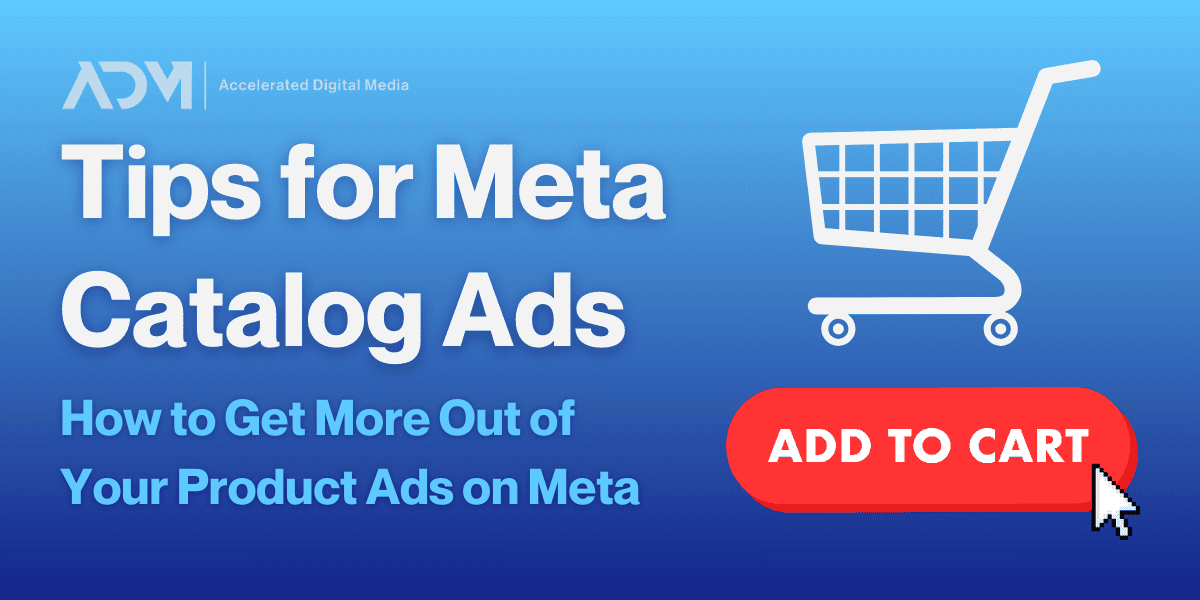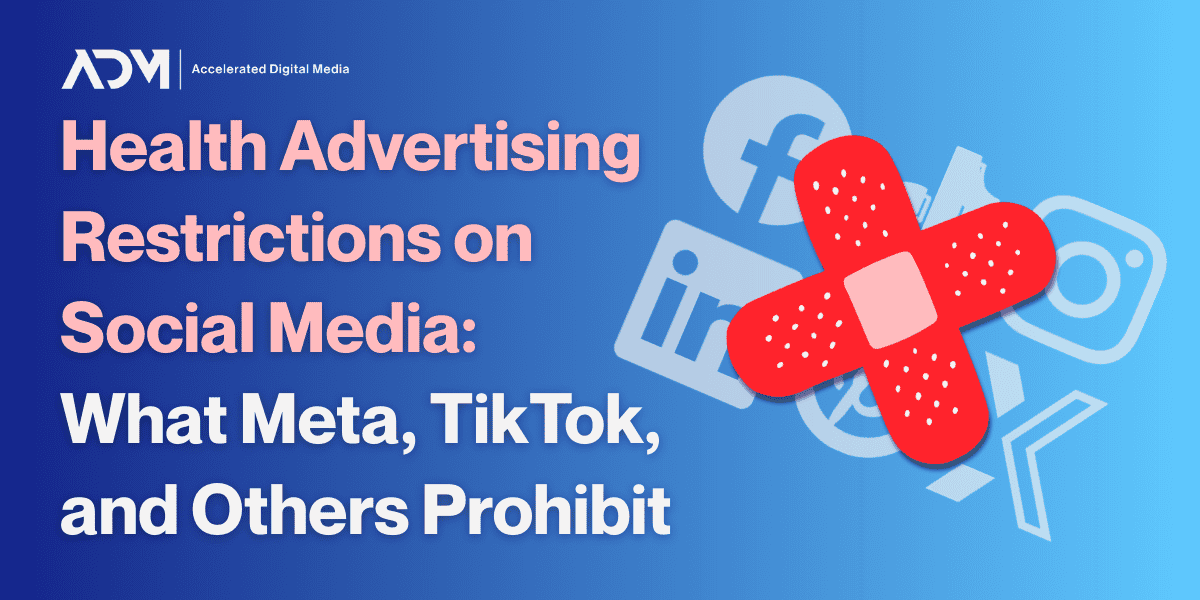When you see an ad on social media, you should be able to figure out pretty quickly if it was meant for you. If the ad matches your interests or shopping behavior to a tee, the advertiser is doing something right.
For a long time, that accuracy could have been ascribed to the advertiser’s use of social targeting tools, like Meta’s pre-built interest audiences. But increasingly, the creative that goes into that ad—the copy, images, videos, and other elements—have begun to play a larger role in determining who will end up seeing it.
For social advertisers, it can be tiring to refer to the 2021 iOS privacy updates so frequently—but they truly were an inflection point that changed a lot in digital marketing. After the iOS updates, interest audiences on Facebook and Instagram lost much of their potency—to the point that many advertisers began to wonder if these platforms were still worth their ad spend.
They are, of course—but in this new environment, ADM applies a principle throughout our client accounts: Be broad in your targeting and specific in your creative. In this blog, we’ll explain what that means, why it’s important, and how to align your creative with your audience to build sustained Facebook and Instagram marketing success.
Broad Targeting on Facebook
Broad targeting, in the purest sense, means running Meta campaigns narrowed only by age, location, and gender.
You can still target interests and lookalikes, but they’re less impactful: it isn’t as effective to rely on heavily segmented interest and lookalike audiences. Rather than targeting just users who have shown an interest in Nike, for example, you’d want to stack multiple activewear audiences together in your targeting: including Adidas, Lululemon, and other competitors.
When testing audiences, ADM recommends sticking with broad audiences, “stacked” interest audiences—combined audiences built of several smaller interest groups that have proven effective—and stacked lookalike audiences. Depending on your brand’s budget, however, it might not be economical to test running all 3 at the same time.
Do Broader Audiences Equal More Impressions and Worse Metrics?
Simply put: no. Because your ad delivery is still controlled by your budget, targeting larger audiences doesn’t mean you’ll end up with thousands of excess or potentially-wasted impressions.
You’ll still reach the number of people your daily spend allows: the audience size you define just determines whether Meta’s algorithms are trying to find your matches from a much larger pool of candidates. That puts even more of an onus on deploying creative that encourages your intended customers to self-select, which in turn will inform and improve Meta’s targeting efficiency for your brand.
Meta itself is pushing advertisers in this direction as well. Its new Advantage+ campaign types don’t even allow most types of specific targeting, leaving your campaign’s performance up to how well you can speak to your audience and how quickly the platform’s machine learning can hone in on that cohort. In our early use of this tool, it has proven extremely effective in delivering new value to clients.
Two Questions to Ask Yourself About Facebook Creative
When designing your creative, start by asking yourself these two questions:
Is it clear who the audience is? If someone knows nothing about your brand, you want your creative to make it immediately clear to them what you offer and whether your offerings are intended to appeal to them.
Is it easy for your audience to understand? A lot of audience specificity can come down to language and jargon. In sorting for your intended audience, it’s important to understand where they are at different stages of their journey. For a brand selling baby products, a new mother might not understand the same terminology or milestones as someone with previous children.
Make Meta Creative that Hooks Your Audience From the Start
The easiest place to start with your creative is, well, the beginning! The first sentence of your ad copy or the first 3 seconds of your video ad should speak directly to your audience.
Sticking with the activewear example, if you were advertising running sneakers for serious enthusiasts rather than part-time hobbyists or sneaker collectors, for example, you could start out with “Are you training for your next marathon?” That will instantly grab those who are, indeed, training for a marathon while causing those outside of your niche to keep scrolling—sending signals to Meta about what types of users to target or avoid.
Static Images Can Tell Stories
Audience-focused creative doesn’t have to be overly complex. Good static images that include annotations of the product’s features and benefits, for example, can give you the opportunity to both show off the product and deepen user understanding of it. Those benefit callouts within the static image can act like additional ad copy for reaching your audience. If you’re looking to reach an audience that’s interested in sustainability, call out the sustainable elements used in the item.
UGC to Reflect Your Audience
User-generated content, or UGC, has taken on a fundamental role in social advertising. One great way to help users self-select for your Meta campaigns is to deploy UGC advertising with influencers who the intended audience can relate to: Those who meet the demographics and express the same interests, style, and values as the market you’re trying to reach.
Creative Testing Your Meta Ads is Essential
As the importance has shifted from audience targeting to creative development, so should your Meta ads testing regimen. Creative testing is the most important thing you can spend your time on in social advertising.
We work off the rule of threes: Using three different iterations of similar creative to find a winner. Just one element should be different, which can mean three different “hooks,” or three different image overlay texts or ad copies. Use dynamic ad formats to test your different iterations, and then pluck out the lower-performing options performers. This can be done with lower budgets to start, so only the winning creative options “graduate” once the campaign is brought up to scale.
Another useful element of Meta’s Advantage+ campaign style is that it allows you to run three times as many ad options at once compared to a traditional Meta campaign, making it an ideal campaign type to use for creative testing.
Be Willing to Try New Things
Brands can often get attached to a certain creative style, message, or ad approach. But just because something has worked in the past doesn’t mean it will work forever, and it’s always worth investigating new approaches.
That’s especially true with new mediums. Just as you can test with different hooks across the video creative medium, you can also test mediums against each other. If you’ve only ever used static images or videos, it may be worth testing .gifs. Or, if you’ve only ever used Carousels, it may be worth it to see how Slideshows perform. Don’t completely close your mind off to any creative options, and always be willing to test against the grain: If you’re unwilling to be proven wrong, your marketing will never grow.
If you’re interested in learning more about ADM’s approach to Meta advertising or our creative services packages, don’t hesitate to contact us with any questions.




